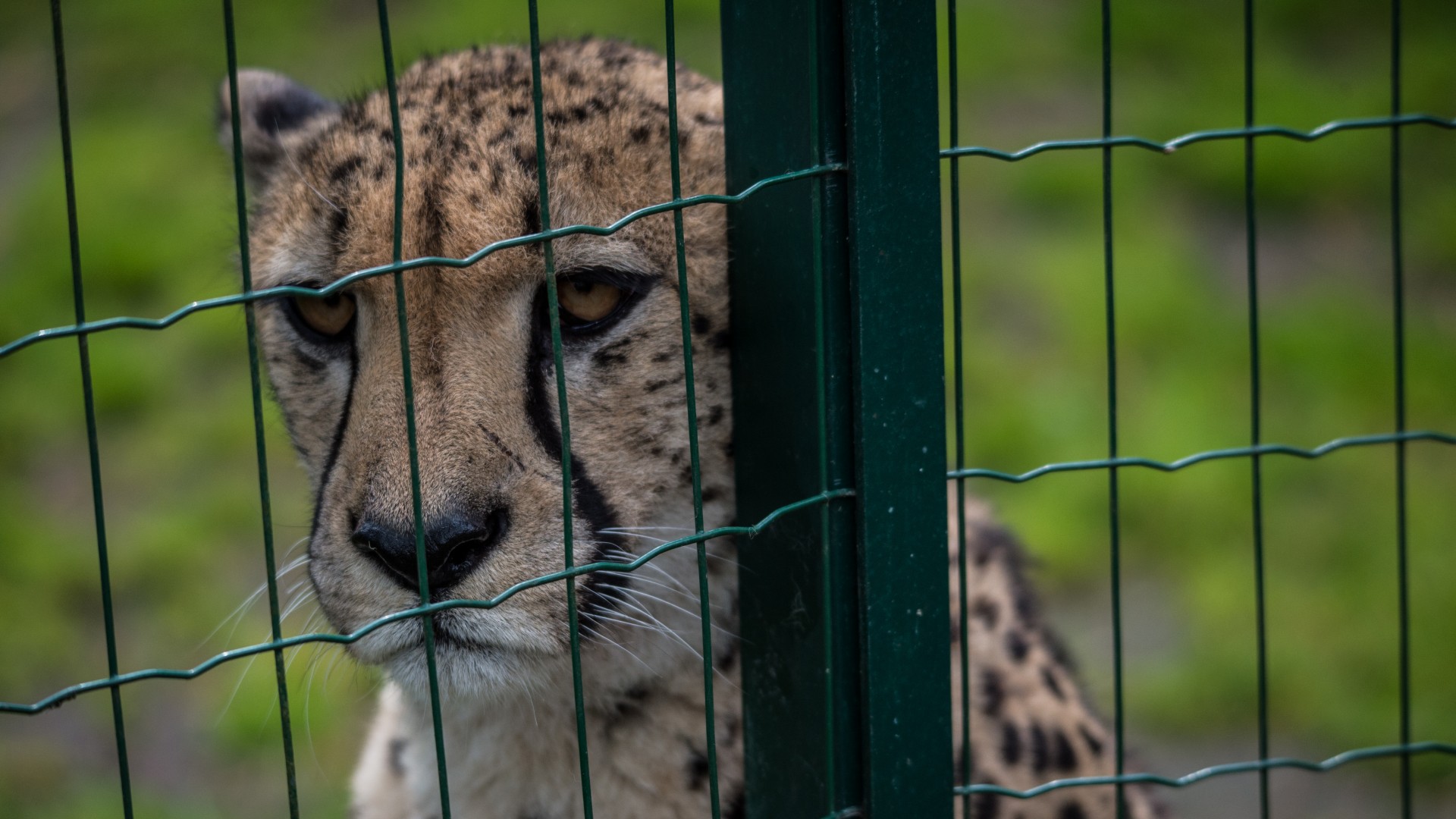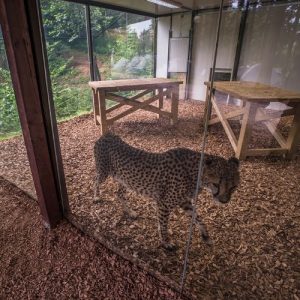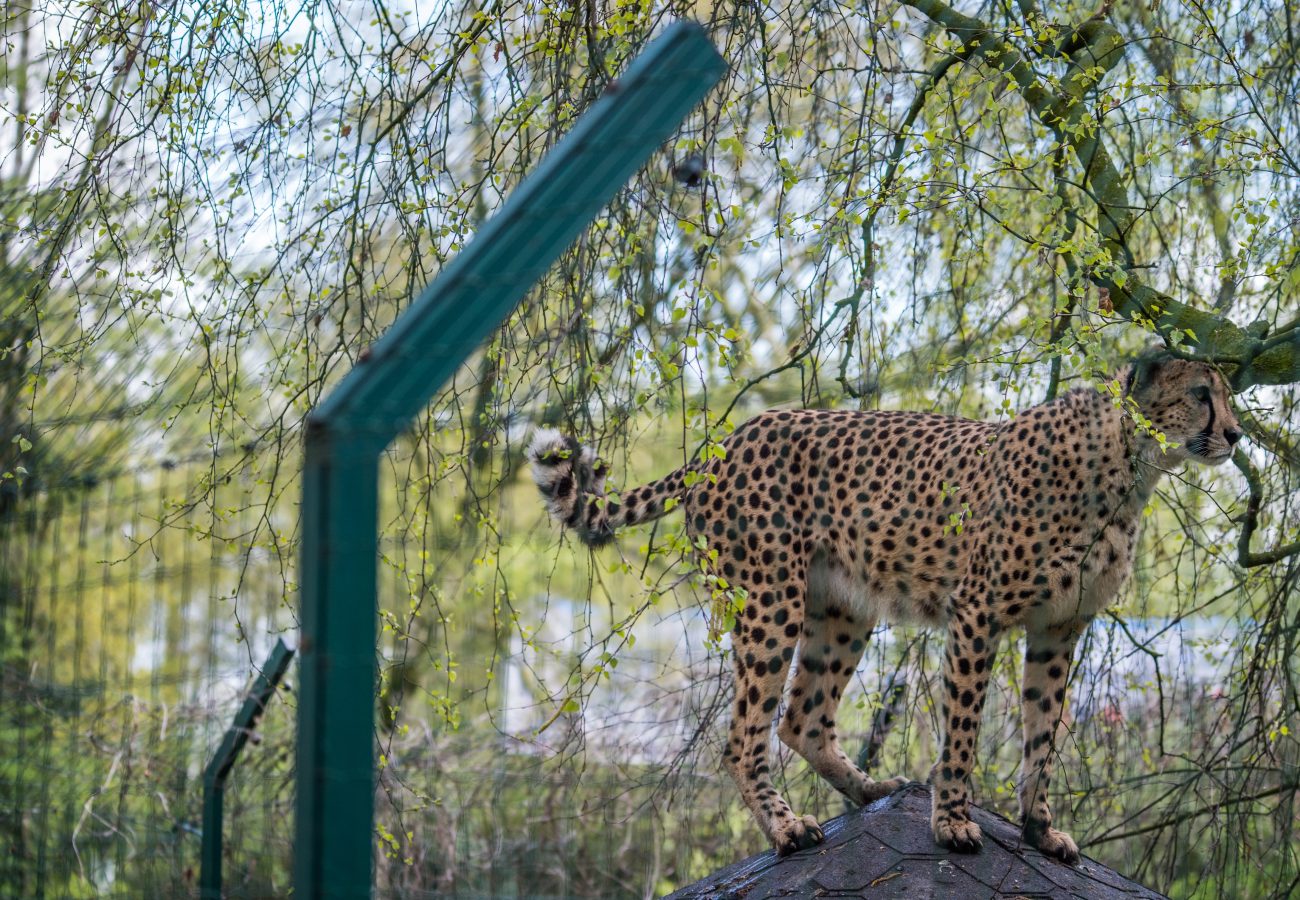A spotlight on captive cheetahs
Throughout the world, hundreds of cheetahs are exploited in zoos and kept as status symbol pets. Frankie Osuch from our Policy team reports.

© J McArthur, BFF

Frankie Osuch
Born Free works to protect cheetah living both in the wild and in captivity. In the wild, cheetahs are classified by the International Union for the Conservation of Nature (IUCN) as Vulnerable to extinction and their numbers are declining.
Thousands of cheetahs are also kept in zoos, as well as trophy pets in people’s homes, where their welfare is inevitably severely compromised. As well as tackling threats to cheetah conservation through habitat loss and persecution, we campaign to end the keeping of cheetahs and other big cats in zoos, and the taking of individuals from the wild for sale into the pet trade.
How many cheetahs live in zoos?
In Europe, there are currently over 360 cheetahs in zoos, including approximately 50 in the UK. Cheetahs, like other large wide-ranging mammals, do not thrive in captivity where they are subjected to unnatural environmental, social and dietary conditions that can have implications for their physical and mental health.
Zoo enclosure sizes are tiny compared to the space cheetahs would occupy in the wild. As highlighted in our groundbreaking report, Clawing at the Cages: The Problem with Keeping Big Cats in Zoos, the median enclosure size for cheetahs in UK zoos is less than 2,400m2 (0.6 acres), whereas their median annual home range size in the wild is approximately 154km2 (over 3,800 acres).
Cheetahs have evolved to roam an average of 2½ miles (4km) a day and can reach speeds of up to 70mph (112kph) – behaviours which are severely limited by such tiny enclosures. The frequent presence of visitors and associated noise may also be a persistent source of stress for these naturally timid animals.
Cheetah family life
Cheetah social groupings are unique among big cats. Female cheetah are solitary (live alone) and males are either solitary or form coalitions, often consisting of brothers. However, in zoos, cheetahs are deprived of the choice of who they do and do not associate with and are often held in inappropriate social groupings.
Cheetahs are particularly difficult to breed in captivity, because of a combination of health and behavioural issues, and lack of genetic diversity among captive populations.
What is a cheetah’s lifespan?

© J McArthur, BFF
Zoos often point to differences in life expectancy as justification for captivity as, on average, big cats live longer in captivity compared to the wild. Such differences should be expected given their high mortality rate in the wild, the absence of threats such as poaching, and access to veterinary care. Wild cheetahs have a lifespan of up to 14 years for females and 10 years for males. In captivity, cheetahs can live up to 20 years, however they generally have a lifespan of 8–12 years.
But, life expectancy alone is not a true measure of animal welfare. Other physical and behavioural assessments also need to be considered.
For example, big cats in captivity are prone to unnatural repetitive ‘stereotypic behaviours’ (which are a sign of frustration), with one study finding that cheetahs spent 13.55% of their time ‘route-tracing’ (repeatedly walking the same route within their enclosure, often wearing a path into the ground). In addition to such psychological ailments, cheetahs in zoos are particularly susceptible to a variety of infectious diseases, including those which can lead to death, many of which they would be unlikely to encounter in the wild.
Researchers have also identified differences in the shape of the skull, as well as lower bone density in captive big cats, compared to their wild counterparts. This is not only a welfare concern for individual cheetahs; it could also limit their chances of survival if they were ever released into the wild.
Does breeding cheetahs in zoos help conservation?
While the IUCN Red List mentions ‘ex-situ captive breeding’ (taking place outside their natural habitats) as a conservation action for cheetahs, this does not justify keeping them in zoos, so far away from their wild habitats. Some believe the breeding of animals in captivity for conservation purposes is best carried out in more natural or semi-wild environments where reintroductions may be more easily facilitated and achieved.
The viability of big cat zoo breeding programmes is further hindered by issues of inbreeding and lack of sustainability among zoo populations, and the fact that the zoo environment is completely unsuitable for preparing big cats for survival in the wild.
Overall, the breeding and keeping of cheetahs in zoos fails to directly address the threats faced by wild populations and serves only to ‘re-stock’ existing zoo populations.
What are the main threats to cheetahs in the wild?
Cheetahs in the wild face many threats such as habitat loss, lack of prey, conflict with humans over livestock predation and capture for illegal trade.
While the IUCN lists the cheetah as Vulnerable at the species level, there are currently four recognised subspecies, including the Northeast African subspecies (Acinonyx jubatus soemmeringii) which is listed as Endangered.
Poaching to meet demand for the illegal pet trade is likely to be one of the biggest threats to this subspecies’ survival. Cubs have a very high mortality rate once they are removed from the wild and many die for every cub successfully trafficked to the Middle East, their main market as luxury pets.
What is Born Free doing to help cheetahs?

© Thierry Grobet
Born Free’s sanctuary in Ethiopia, Ensessa Kotteh, is helping to address this serious threat by providing confiscated cheetah cubs destined for the illegal pet trade, as well as injured or orphaned individuals, with the highest possible standards of lifetime care.
As the only centre of its kind in Ethiopia, the work of Ensessa Kotteh is critical for the welfare of rescued animals and also plays a pivotal conservation role by protecting biodiversity within the 77-hectare site, continuing to provide a haven for free roaming wild animals and supporting important Ethiopian plants.
Without a knowledgeable wildlife rescue centre to provide housing, medical care and rehabilitation opportunities, enforcement authorities are often unable to confiscate illegally traded and owned animals, because they have nowhere for them to go. Additionally, Born Free’s community engagement programme in Ethiopia works to engage local school children and community members to help change attitudes towards wildlife conservation and individual animal welfare.
While the conservation concerns and standards of welfare for individual cheetahs vary greatly between different captive industries and facilities, Born Free’s ultimate goal remains the same. We’re working towards a future where every cheetah is kept safe in the wild, where they belong.
Find out more about cheetahs with our 20 fun and interesting facts!

BIG CATS ARE CLAWING AT THE CAGES
Awe-inspiring big cats are being reduced to living exhibits, with zoos hiding behind their conservation and education claims.
Big cats don’t belong in zoos, but we need your help to make it stop.
